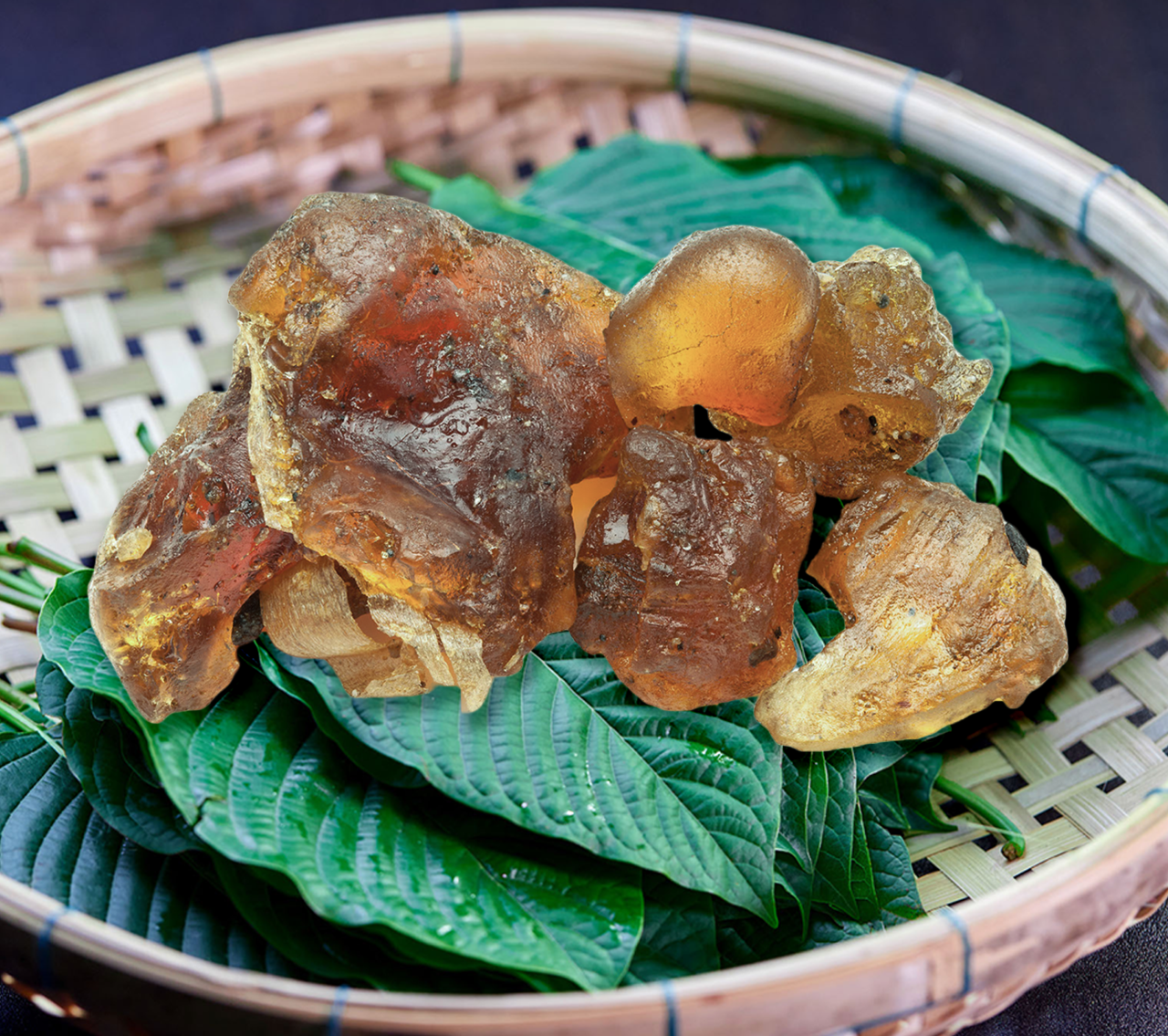
Even among kratom devotees, you sometimes hear about brand-new kratom products that might raise some questions.
One recent example: kratom resin, an extra-potent extract that’s turning heads in the wider kratom community.
So, just what is Kratom Resin, and why is it such a big deal? Is it the next big thing, or just another in the long line of kratom fads and marketing ploys?
Let’s dive in to the emerging world of kratom resin.
Kratom Basics
Although any long-time Kratom Spot reader will already know, it never hurts to review the basics:
Kratom is a plant that grows primarily in Southeast Asia, and its leaves have been used for centuries as traditional medicine.
More recently, it’s become increasingly popular throughout much of the Western world, where it is valued for its supposed therapeutic and recreational effects.
Generally speaking, kratom resin is used for much the same reasons as traditional kratom powders and kratom teas. However, the difference is a matter of degree: Kratom Resin takes things up an extra notch, and some users report that it offers effects that are significantly amplified over traditional kratom’s.
What Is Kratom Resin
Kratom Resin is a concentrated extract made from the leaves of the Kratom plant. It is one of the three most common types of kratom extract. Kratom resin has a very different appearance than other forms of kratom, appearing as a thick, dense, slightly sticky solid substance.
Essentially, kratom resin is a processed form of kratom that has had most of the plant matter removed, leaving only a highly-concentrated dose of kratom alkaloids — the compounds responsible for kratom’s effects.
The resin is created by boiling down Kratom leaves until they form a thick, dark substance that is more potent than traditional Kratom powder or capsules. This concentrated kratom is difficult to track in terms of dosage, and it has a strong bitter flavor.
A Word of Wisdom
Personally, we’re not going to recommend boiling down your kratom, messing with DIY extractions, or trying to to increase the potency of your kratom artificially, so if you’re looking for a kratom resin recipe, you’ll have to go elsewhere.
But if you’re looking for tips and tricks to make your kratom experience go a little further, you’re in luck. These guides are perfect for keeping your all-natural kratom dose performing like a champ:
What Does Kratom Resin Look Like?
Kratom Resin comes in a few different forms, which vary depending on the exact process that was used to make the resin extract.
According to most sources, the most likely forms will look like small, dark rocks, while others come in a sticky, tar-like consistency.
How To Take Kratom Resin
Regardless of its form, Kratom Resin packs a punch. It’s known to be more potent than other forms of kratom, so it’s important to use it with caution, and always buy from a reputable kratom vendor.
One of the benefits of kratom resin is that it’s easy to use. You can mix it into drinks or food, or simply take it on its own.
That said, be aware: kratom’s raw, bitter taste is going to be extra strong in kratom resin. That means that kratom resin is not the solution for users trying to improve the taste of their kratom dose. Even long time kratom lovers might find the high concentration of that flavor to be too much, and might seek out a tastier option. For that, try kratom capsules or flavored kratom beverages.
If you do try kratom resin: keep in mind the golden rule of using kratom: start with very small doses and only increase once you’re positive how you’ll react – Kratom Resin is powerful stuff, so this rule is more true than ever..
Kratom Resin Effects
If you’ve tried traditional kratom, you likely know: kratom’s effects vary widely based on a number of factors. These include your biochemistry, the strain or types of kratom you use, your dosage, and your experience with kratom.
Kratom resin is just as varied, and different people will respond differently to even identical doses of the exact same kratom resin.
We’ll say again: always start with a very small dose when you’re trying a new kratom product. You don’t want to be surprised by the effects, even if you’re an experienced kratom user.
How to Measure the Potency of Kratom Resin?
The strength of kratom resin is notoriously difficult to measure. That’s because kratom resin is often made at home and, as such, is very rarely sent for comprehensive laboratory testing.
Instead, kratom resin is usually measured as a matter of concentration, with labels such as “8x kratom resin”, “20x resin”, etc.
These numbers refer to the resin’s concentration of alkaloids by weight compared to the raw kratom powder used to make it.
For instance, if 1 pound (16 ounces) of kratom powder was used to create kratom resin, and the resulting resin weighs ⅛ pound (2 ounces), it would be referred to as an “8x kratom resin”.
How to Use Kratom Resin?
Kratom resin is very versatile and can be taken in any number of ways.
While some users take it orally, most users find this method unpleasant due to kratom resin’s thickness and distinctive, often bitter flavor. If you choose to take kratom resin orally, we strongly recommend using the “mix and wash” variation of the toss and wash method or taking it with a pleasant-tasting juice.
More often, kratom resin is mixed with tea, coffee, or another hot beverage. The heat of these beverages allows the kratom resin to melt and easily integrate into the beverage. And because the alkaloids have already been separated from the plant matter (see “How to Make Kratom Resin” below), you don’t need to boil your tea or otherwise take extra time to prepare your kratom beverage!
In this sense, making kratom resin is a good way of “front-loading” the work of making kratom beverages. By making a bulk batch of kratom resin, you can save time in the long run, as making kratom tea by the batch can be quite time consuming, indeed!
How to Make Kratom Resin
At first, how to make kratom resin may seem like an intimidating, involved process. But once you get into it, you’ll find that making kratom resin is a reasonably straightforward process that can be completed with very common household ingredients.
While it does take a bit of time to produce, most of the process is “set it and forget it” rather than requiring constant attention.
Note that techniques for how to make kratom resin vary significantly. As such, the instructions you’ll find below describe a general process and do not give specific numbers for quantities or ratios. Here, a bit of experimentation will be your best friend — but, even without precise figures, the general process is consistent enough that you’ll be producing kratom resin even with imperfect ratios.
What You’ll Need:
- High quality kratom powder
- A kitchen scale (optional, but very useful for measuring the concentration of your powder)
- A mild-strength, non-toxic natural acid such as lemon juice, lime juice, or vinegar
- Water
- A freezer-safe mixing bowl
- Coffee filters, cheesecloth, or another fine strainer
- A container in which to store your finished kratom resin
- Access to a freezer, stove-top, and oven
How to Make Kratom Resin, Step-by-Step:
- Measure out a quantity of kratom powder on your kitchen scale, then record the figure for later use.
- Add the measured kratom powder to your mixing bowl, then add water until the kratom powder is covered.
- While mixing the kratom powder and water, add your lemon juice, lime juice, or vinegar. Continue stirring until thoroughly combined.
- Cover the mixture, then leave it to steep overnight.
- Place the mixing bowl in the freezer and allow the mixture to freeze solid.
- Bring a small pot or saucepan of water to a light boil, then add the frozen kratom and acid mixture to the boiling water.
- Add additional lemon juice, lime juice, or vinegar to the boiling water. Reduce the heat and bring the mixture to a simmer.
- Once the frozen mixture has completely thawed, continue stirring occasionally until approximately ¼ of the liquid has evaporated. Then, remove the mixture from heat and allow it to cool.
- Strain the mixture, then place it back in your mixing bowl. Place it aside and allow approximately half of the remaining liquid to evaporate.
- You should be left with a wet powder sitting in a small amount of liquid. Transfer this back into your saucepan, add more water and lemon juice or lime juice, then bring to a simmer.
- Once this liquid has largely evaporated, repeat Step 10 one more time, then remove from heat.
- Bring your oven to 150-200 degrees Fahrenheit.
- Place the contents of your saucepan into a small oven dish, then place it in the oven. Check occasionally to see whether the remaining liquid has evaporated.
- You should be left with a thick, concentrated kratom resin. Remove from the oven, and allow to cool.
- On your kitchen scale, measure the weight of the empty container you’ll use to store your kratom resin. Note this number down.
- Transfer the cooled kratom resin into the container, then measure the container’s weight. Subtract the weight of the empty container to find the weight of the concentrate. Use this number, in calculation with the weight of the kratom powder from Step 1, to measure the concentration of your kratom resin.
Kratom Resin, In Closing
All in all, Kratom Resin is a potent extract that some of the most experienced users might find as an attractive option.
That said, kratom extract resin makes it far more difficult to track your consistent dosage. It amplifies not only kratom’s effects, but also its potential side-effects. And moreover, any time you’re modifying, extracting, or otherwise interfering with your natural kratom experience, it’s essential to do your research and take it slow.
At Kratom Spot, we believe there’s no substitute for traditional, all-natural kratom. But if you’re looking into the world of kratom resin or other extracts, we urge you to know your body, take things slow, and make sure you understand where your kratom resin comes from and what goes into its manufacturing.

